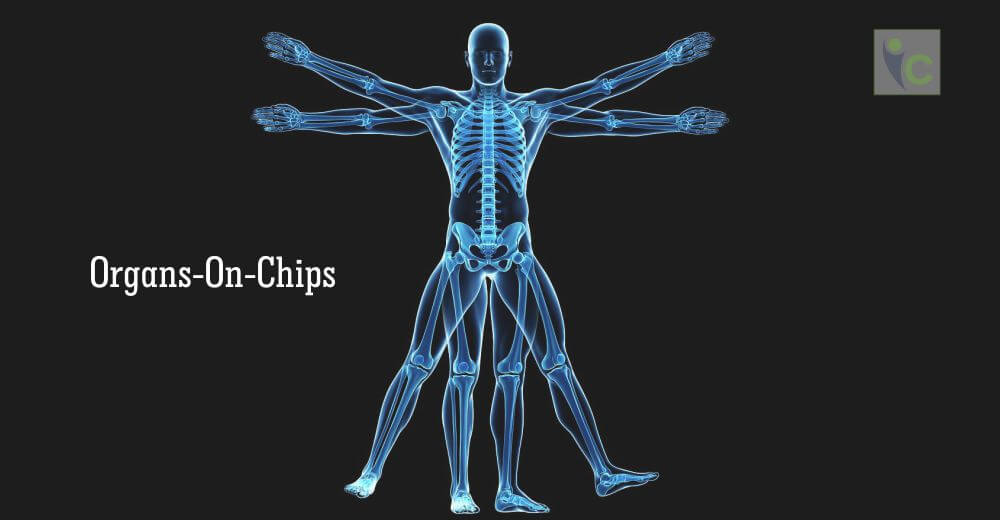New drugs, medications and therapies are discovered every day. Pharmaceutical companies spend enormous amounts of funds and time on the research and development of novel drug targets strategies. In spite of all the effort not all the medications and therapies make it to the market. There is a dire need of a solution to accelerate drug research.
For quite some time now cell cultures in petri dishes have been used to test the efficacy of new therapy, but this method does not give us a full proof knowledge of the working of the therapy. Cell cultures in-vitro do not react to drugs in a way similar to how they would retort inside the human body. Moreover, animal testing is a time-consuming, expensive, and is not satisfactory enough to prove the efficiency of a treatment on humans. Numerous drugs and therapies pass the animal tests, but end up being proved detrimental to humans; because traditional animal models often do not precisely mimic human pathophysiology. More than $2 billion are spent on a single compound being clinically tested. Meanwhile, countless animal lives are also lost. For these reasons, there is an exigent need for alternative ways to fast-track the development of new drugs and improve personalized medicine.
To address this pressing issue scientist have come up with a new technology “organs on chip.” These are Cell cultures, often in 3D, that use microfluidics to mimic the way a tissue or part of an organ work. From breathing lungs to beating hearts, organs-on-chips are some of fieriest novel tools for human biology research. Although these devices may bear closer semblance to computer constituents than human body parts, scientists have now produced working models for a whole assortment of organs, including the lung, the liver, and even the female reproductive system.
Scientists hope to use these devices to model disease and ease drug development. Organ on chip research has already permitted us to create numerous microfluidic chips that can partly mimic organ function. Multi-organs on chip might also allow us to observe the side effects of drugs on different organs, and not keep the study restricted to those organs that the treatment targets. The goal is to be able to link a maximum of parts in order to, allow one and all to have access to customized treatments by using their one’s own cells to test them, which is termed as personalized medicine.
Functioning of Organ-on-Chip
It is improved computer microchip manufacturing method to engineer microfluidic culture devices that reiterate the microarchitecture and functions of living human organs. These micro devices, propose a prospective substitute to traditional animal testing. Each organ chip constitutes a clear flexible polymer approximately the size of a computer memory stick that encloses hollow microfluidic channels lined by living human organ specific cells. These cells are interfaced with a human endothelial cells lined on an artificial vasculature; mechanical forces can be applied to this set up to mimic the physical microenvironment of living organs, which includes the peristalsis-like deformations in the intestine and breathing motions in lung.
They are fundamentally three-dimensional, living cross-sections of chief functional components of complete living organs. The translucent nature of the device, allows scientists to view the inner working of the human cells without invading the living body. With their capability to host and combine the diverse cells and tissues, organ chips present an idyllic microenvironment to study molecular and cellular activities that bring about human organ function and imitate human specific disease conditions, as well as pinpoint new therapeutic targets in vitro.
This device, intended to mimic whole-body physiology, controls fluid flow and cell viability while simultaneously permitting real-time observation of the cultured tissues and facilitates analysis of the intricate connected biochemical and physiological responses across ten different organs. This complete “Human Body-on-Chips” method can be used to predict human pharmacokinetic and pharmacodynamics reactions of drugs in vitro.
Lungs on Chips
Today the primary goal of the healthcare space is the development of novel solutions to treat pulmonary diseases. Studies have shown that lung diseases are the fifth largest cause of death, and are predicted to be the third by 2020, all around the world. To address this issue it is important to develop strategies and drugs that can be made available to the public quickly. In this circumstance, using lungs on chips to facilitate the development of new treatments has shown a potential way ahead.
The device mimics a living, breathing human lung on a microchip. The device, about the size of a toffee, acts much like a lung in a human body. It is made using human lung cells and blood vessel cells. At present scientist are still unable to mimic the exact entire lung on a microfluidic chip. Nonetheless, researchers have succeeded to replicate the function of an alveolo-capillary membrane that is the tiniest functional unit in the lung. This organ is the most vital part when it comes to testing of new medicines, as it constitutes the vital physical barrier between the body and the exterior world. This device has the potential to become a valuable tool for testing, absorption of aerosolized therapeutics, effects of environmental toxins, and the safety and efficacy of new drugs.
Heart on Chip
Speaking of serious health problems, heart disease certainly tops the list. The number of deaths due to heart failure is escalating day by day. Hearts-on-chips were developed, specifically because of the substantial differences between animal and human heart cells. Using this technology scientists aim to study heart diseases and cardio-toxicity of chemical treatments. In comparison with regular cell culture, microfluidic chips allow collecting more relevant data. The chip comprises of several wells, each with separate tissues and integrated sensors, permitting experts to study various engineered cardiac tissues at once. The chips have the potential to become the best tool to study new treatments against heart disease.
Brain on Chip
Brain on chip research has helped to replicate a small part of the brain, ‘the blood-brain barrier’, on chip. This barrier has a crucial function: of protecting the brain from all the pathogens in the blood and only lets through the nutrients the brain needs. On the other hand, this barrier can be problematic for some drug treatments, because it bars selected active sites from accessing the brain such as the medication against Parkinson’s disease. These microfluidic chips permit experts to test the flow of a physiological fluid on the epithelium; this mimics the blood flow and allows the brain cells proper differentiation and maturation. In spite of the fact that research in the field of blood-brain barrier microfluidic chips is only starting out, several models already exist.
Gut on Chip
Another organ here is the gut on a chip. The gut is a crucial organ when it comes to absorption of medicine, and this breakthrough technology would help us comprehend these issues better; and fast forward research. Scientists have developed a two-layer gut on chip system, similar to the lung on chip discussed above. This technology, much like the lung on chip, has proved to be very important, since it has permitted to re-create the mechanical tension, simulating peristaltic movement. During a particular study using this technology, the researcher used stem cells from a patient, who was suffering from digestive disorders, and developed with a gut on chip tool. Using this, experts were able to study the responses of the certain types of food and new treatments. This illustration comes to show what personalized medicine could look like, using organs on chips.
Multi-Organs on Chips
In the near future if developing organs on chips proved useful for testing certain treatments, in order to absolutely replace animal testing or to simplify personalized medicine, it is essential to link these organs together. While developing a new treatment strategy or drug testing it is vital to check the effect of these on the entire body as a whole. This is where multi-organ on chips can help out. Most multi-organs methods have also permitted scientists to study absorption and metabolism. Multi-organs on chips have allowed experts to carryout tests on previously existing medicine, meanwhile also allowing the progress of anti-cancer research.
Promising Applications of the Technology
Organs on chips can prove to be cheap and widely reproducible could be decisive. They could permit testing at a very low cost, minus years of waiting periods. They will also cut down on the present ethical concerns, which come with animal testing. This technology will provide increased access to personalized medicine. Organ on chips will help fight the battle against cancer. Creating tumors on chips, would allow us to directly test the treatments on tumors. It will also allow us to determine the side effects of certain treatments in advance. However, many challenges need to be addressed in order to completely replace animal testing in the development of new medicine.















